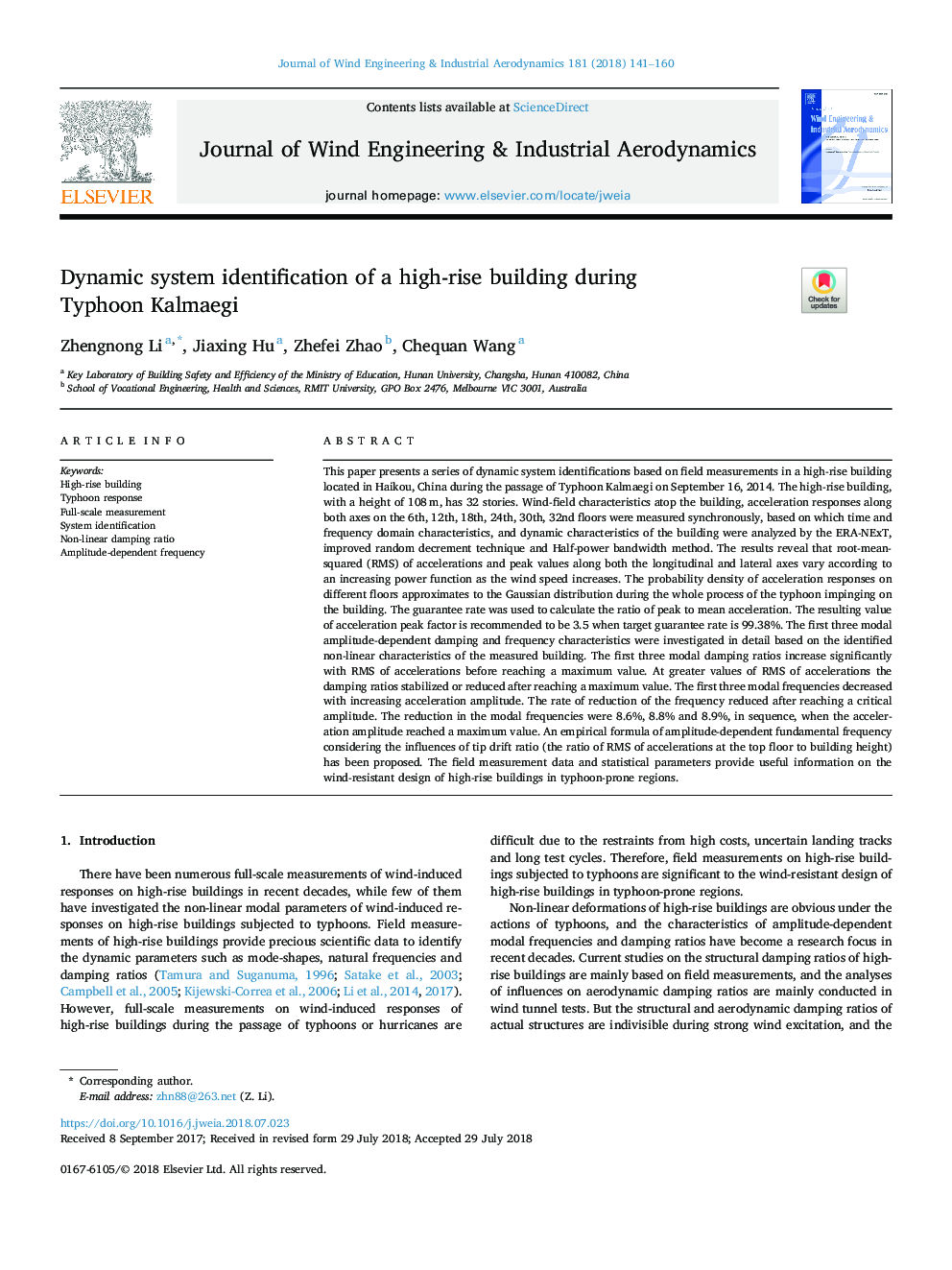| کد مقاله | کد نشریه | سال انتشار | مقاله انگلیسی | نسخه تمام متن |
|---|---|---|---|---|
| 10132061 | 1645551 | 2018 | 20 صفحه PDF | دانلود رایگان |
عنوان انگلیسی مقاله ISI
Dynamic system identification of a high-rise building during Typhoon Kalmaegi
دانلود مقاله + سفارش ترجمه
دانلود مقاله ISI انگلیسی
رایگان برای ایرانیان
کلمات کلیدی
موضوعات مرتبط
مهندسی و علوم پایه
مهندسی انرژی
انرژی های تجدید پذیر، توسعه پایدار و محیط زیست
پیش نمایش صفحه اول مقاله

چکیده انگلیسی
This paper presents a series of dynamic system identifications based on field measurements in a high-rise building located in Haikou, China during the passage of Typhoon Kalmaegi on September 16, 2014. The high-rise building, with a height of 108â¯m, has 32 stories. Wind-field characteristics atop the building, acceleration responses along both axes on the 6th, 12th, 18th, 24th, 30th, 32nd floors were measured synchronously, based on which time and frequency domain characteristics, and dynamic characteristics of the building were analyzed by the ERA-NExT, improved random decrement technique and Half-power bandwidth method. The results reveal that root-mean-squared (RMS) of accelerations and peak values along both the longitudinal and lateral axes vary according to an increasing power function as the wind speed increases. The probability density of acceleration responses on different floors approximates to the Gaussian distribution during the whole process of the typhoon impinging on the building. The guarantee rate was used to calculate the ratio of peak to mean acceleration. The resulting value of acceleration peak factor is recommended to be 3.5 when target guarantee rate is 99.38%. The first three modal amplitude-dependent damping and frequency characteristics were investigated in detail based on the identified non-linear characteristics of the measured building. The first three modal damping ratios increase significantly with RMS of accelerations before reaching a maximum value. At greater values of RMS of accelerations the damping ratios stabilized or reduced after reaching a maximum value. The first three modal frequencies decreased with increasing acceleration amplitude. The rate of reduction of the frequency reduced after reaching a critical amplitude. The reduction in the modal frequencies were 8.6%, 8.8% and 8.9%, in sequence, when the acceleration amplitude reached a maximum value. An empirical formula of amplitude-dependent fundamental frequency considering the influences of tip drift ratio (the ratio of RMS of accelerations at the top floor to building height) has been proposed. The field measurement data and statistical parameters provide useful information on the wind-resistant design of high-rise buildings in typhoon-prone regions.
ناشر
Database: Elsevier - ScienceDirect (ساینس دایرکت)
Journal: Journal of Wind Engineering and Industrial Aerodynamics - Volume 181, October 2018, Pages 141-160
Journal: Journal of Wind Engineering and Industrial Aerodynamics - Volume 181, October 2018, Pages 141-160
نویسندگان
Zhengnong Li, Jiaxing Hu, Zhefei Zhao, Chequan Wang,